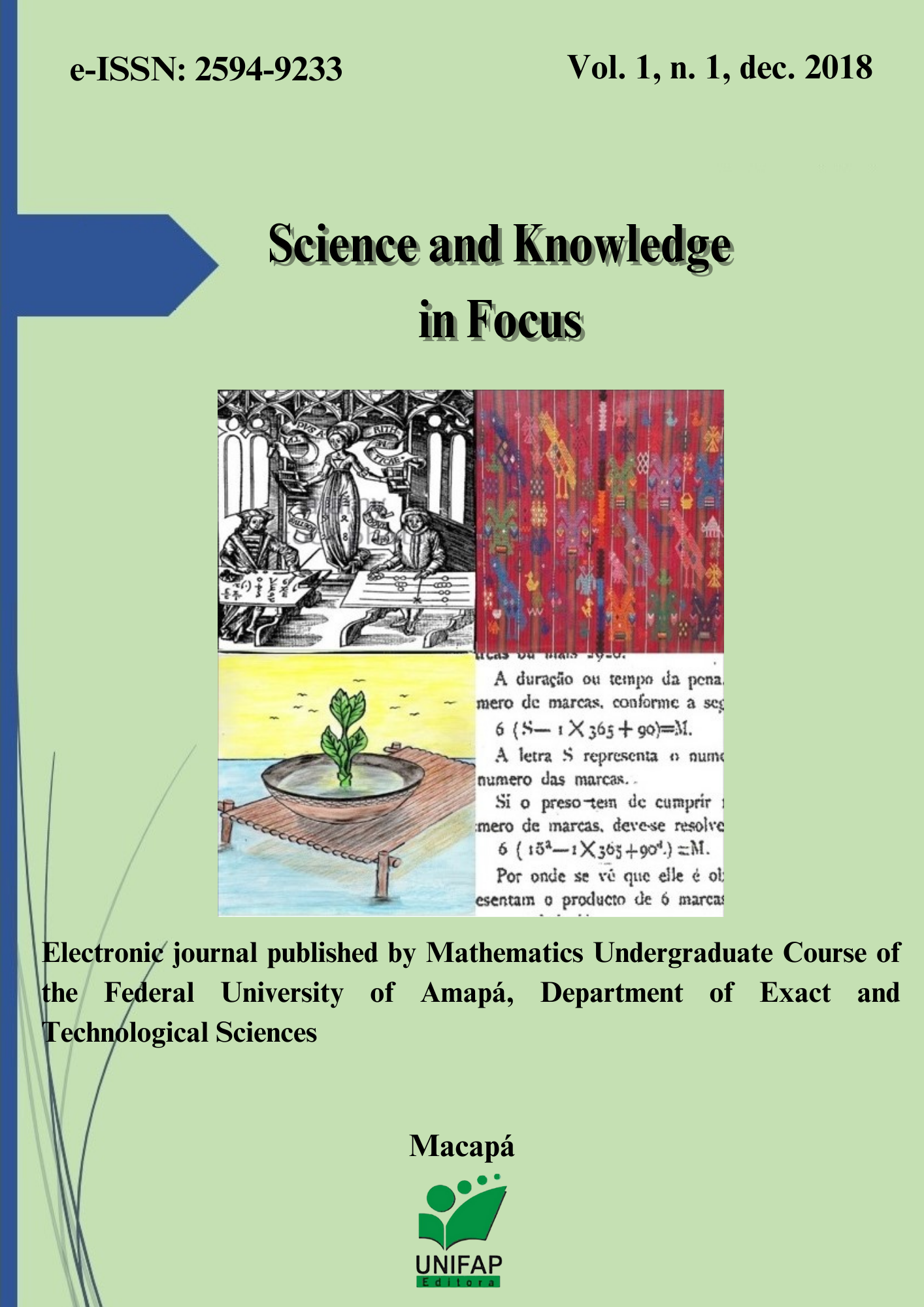Galibi-Marworno indigenous labor practices and modes of mea
research in ethnomathematics
Keywords:
Teaching of Sciences, Ethnomathematics, Galibi-Marworno Culture, Labor Practices, Differentiated Measure SystemAbstract
This paper registers the modes of measuring that we identify in some labor practices of Ga-libi-Marworno natives. Initially, we carried a survey on research in ethnomathematics. Then, other data collected as part of the qualitative research, with the application of a thematic interview script to six Galibi-Marworno. The interviews took at Kumarumã village, at site called “Casa Velha” and on banks of the “Igarapé Paramuaká,” at Uaça Indigenous Land, located to the north of Brazil. The Galibi-Marworno natives use a differentiated measure system that involves measures of length, width, thickness, and areas of land. The units of measure documented in this study were (normal fathom of a man, old meter, finger, key, span, inch, and maritime fathom). Based on the analysis of the interviews, it was found that there is no mathematical convention between these units of measure for the group searched, which justified because each thing or object can assume various sizes in the measurement process. Measure-ments depend on the type of natural resource and the part of the human body that used in the act of measuring. In Brazil, the International System of Units (SI) make part of the school curriculum, and it is taught to the urban and rural population at public schools, as well as to indigenous people. Even so, the Galibi-Marworno natives do not use the units of measure of this system, in agricultural activities or con-structions of canoes, houses, pieces of wood and jamaxis.




















 A revista eletrônica Science and Knowledge in Focus é publicada pela editora da Universidade Federal do Amapá e editada pelo Curso de Graduação em Matemática, vinculada ao Departamento de Ciências Exatas e Tecnológicas.
A revista eletrônica Science and Knowledge in Focus é publicada pela editora da Universidade Federal do Amapá e editada pelo Curso de Graduação em Matemática, vinculada ao Departamento de Ciências Exatas e Tecnológicas.